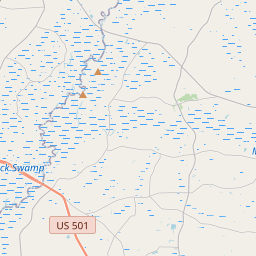Burch's Mill: South Carolinas First Civil War Nears Its End
Historical marker location:






April 12, 1861: The Civil War begins with the Confederate attack on Fort Sumter, located in South Carolina's Charleston Harbor.
April 15, 1861: President Abraham Lincoln issues a call for 75,000 volunteers to serve in the Union Army to suppress the rebellion.
May 24, 1861: The first major land battle, known as the First Battle of Bull Run (or First Battle of Manassas), takes place in Virginia. It ends in Confederate victory.
September 17, 1862: The Battle of Antietam in Maryland becomes the bloodiest single-day battle in American history, with heavy casualties on both sides. The Union forces, commanded by General George McClellan, manage to halt Confederate General Robert E. Lee's advance into Union territory.
January 1, 1863: President Lincoln issues the Emancipation Proclamation, declaring that all slaves in Confederate-held territories are to be set free. However, the proclamation does not immediately free all slaves in the United States.
July 1-3, 1863: The Battle of Gettysburg in Pennsylvania takes place, resulting in a significant Union victory and inflicting heavy casualties on Confederate forces. It marks a turning point in the war.
November 19, 1863: President Lincoln delivers the Gettysburg Address, emphasizing the principles of liberty, equality, and the preservation of the Union.
April 9, 1865: General Robert E. Lee surrenders to Union General Ulysses S. Grant at Appomattox Court House in Virginia, effectively ending the Civil War.
April 14, 1865: President Lincoln is assassinated by John Wilkes Booth while attending a play at Ford's Theatre in Washington, D.C.
May 10, 1865: Confederate President Jefferson Davis is captured, signaling the collapse of the Confederate government.
December 6, 1865: The Thirteenth Amendment to the United States Constitution is ratified, officially abolishing slavery throughout the country.
While this timeline provides an overview of key events, it is important to note that the Civil War spanned over four years, from 1861 to 1865, and encompassed numerous battles, campaigns, and political developments that shaped the course of American history.
More history nearby
The first American military victory of the Revolutionary War took place in South Carolina. In 1775, a small group of American patriots led by William Moultrie successfully defended Fort Sullivan (now Fort Moultrie) on Sullivan's Island from a British attack. The victory prevented the British from gaining control of Charleston Harbor and gave a boost to the American cause.
In 1888, Florence County was formally established after being carved out of neighboring Darlington County. The city of Florence, which would become the county seat, was incorporated in 1890. Early economic development in the county was driven by agriculture, particularly cotton farming, and the construction of railroads, which connected the region to larger markets.
The history of Florence County is marked by key events that reflect the broader historical context of the South. During the Civil War, the county witnessed significant military action, including the Battle of Florence in 1865. The war brought destruction and hardships, but the area gradually recovered in the postwar years.
In the 20th century, Florence County experienced growth and diversification in its economy. The rise of manufacturing, particularly in textiles and tobacco, brought about industrialization and increased employment opportunities. Over time, the county evolved into a regional center for healthcare, education, and cultural activities, with institutions like McLeod Regional Medical Center and Francis Marion University playing vital roles in the community.
Today, Florence County continues to thrive as a vibrant and dynamic part of South Carolina. Its history can be seen through its architecture, museums, and landmarks, preserving the legacy of its past while embracing the opportunities of the present and future.
Florence County Timeline
This timeline provides a concise overview of the key events in the history of Florence County, South Carolina.
- 1888: Florence County is formed from parts of Darlington and Marion counties.
- 1911: The city of Florence is established.
- Early 1900s: The textile industry booms, bringing economic growth to the county.
- 1940s: The Interstate Highway System is developed, connecting Florence County to other parts of the state.
- 1970s: The healthcare industry becomes a major employer in the county with the opening of McLeod Regional Medical Center.
- 2000s: Florence County experiences population growth and urban development.